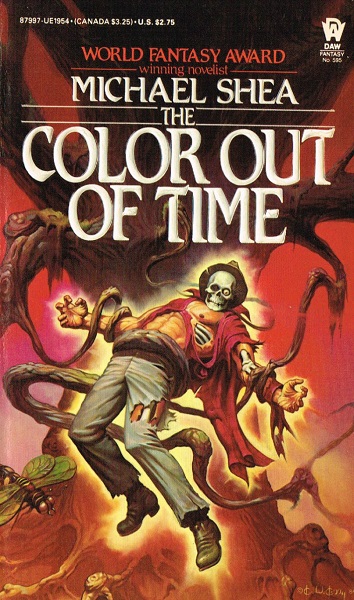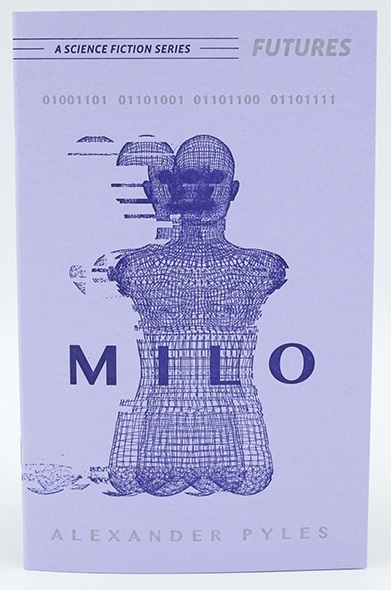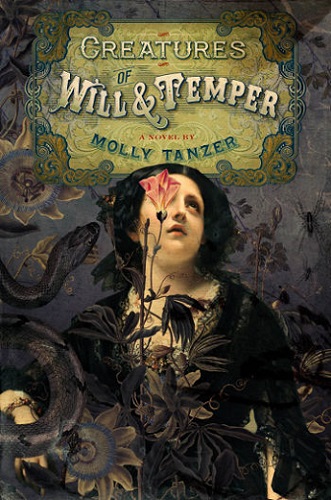 When I first read H.P. Lovecraft’s The Colour Out of Space, I was immediately excited at the thought of writing a sequel. The ending makes continuing the story an enticing proposition. When I investigated the subject, I found Michael Shea had already written a second installment, The Color Out of Time. This didn’t stop me from writing my own follow-up, A Night at the Arkham Reservoir, but I desperately wanted to read Shea’s work to see what he did with the same idea. I couldn’t procure the book until Ramsey Campbell, a Weird Fiction Legend, provided a link to an affordable copy on the Horror Writers Association Facebook page.
When I first read H.P. Lovecraft’s The Colour Out of Space, I was immediately excited at the thought of writing a sequel. The ending makes continuing the story an enticing proposition. When I investigated the subject, I found Michael Shea had already written a second installment, The Color Out of Time. This didn’t stop me from writing my own follow-up, A Night at the Arkham Reservoir, but I desperately wanted to read Shea’s work to see what he did with the same idea. I couldn’t procure the book until Ramsey Campbell, a Weird Fiction Legend, provided a link to an affordable copy on the Horror Writers Association Facebook page.
Aside from the perfectly chosen title, I immediately fell in love with The Color Out of Time’s cover, in all its skeletal glory. The artwork is gruesome and perfectly conveys the fact that this book is a work of horror. This is something that modern horror novels aren’t doing as much of. My attention was drawn to this subject by an excellent video called Horror Books Have Lost Their Identity by In Praise of Shadows, and I highly suggest giving it a watch if you’re interested in the subject.
As to the writing quality, I was already a fan of Shea’s Weird Fiction because I read his story, Tsathoggua, in New Cthulhu: The Recent Weird, edited by Paula Guran. The Color Out of Time is written in a no-nonsense style that reminded me a bit of Roger Zelazny’s work. The story is effectively told, but I occasionally found myself wanting a little more from the descriptions. The Colour Out of Space is a rare story where, I feel, Lovecraft’s purple prose serves as an asset instead of a detriment, and I would’ve enjoyed reading a little more about the color in lush detail. I also felt that, while I loved the protagonists in Tsathoggua, I didn’t have an excellent sense of them in The Color Out of Time. There is a fantastic character introduced halfway through the story, but I need to delve into spoilers to discuss her.
Spoilers Below
While The Colour Out of Space’s Wikipedia page currently lists The Color Out of Time as a direct sequel, it’s actually not. The story posits that H.P. Lovecraft was inspired to write The Colour Out of Space by a real-life event that occurred in the 1930s. The Color Out of Time deals with the ramifications of a reservoir being built over the spot where those events occurred and where, like in Lovecraft’s story, a lingering piece of the monstrous color remains under the lake. That sets this story outside the universe of The Colour Out of Space. It’s an especially odd turn of events for the story because The Color Out of Time is written in such a way as to make the reader think it’s a direct sequel to The Colour Out of Space until about halfway through. When I got to the reveal, I was disappointed that I wouldn’t be visiting Arkham or getting details on the surviving characters from The Colour Out of Space. I’m not sure why Shea decided to go this direction with the narrative. It could be that whoever held the rights to The Colour Out of Space didn’t allow Shea to continue the story. Sadly, since Shea passed in 2014, I’m unable to ask him why he made this choice, but once I got past that twist, I still enjoyed the tale.
To summarize the story briefly, two older gentlemen are enjoying a trip to a lake when they discover strange mutations and a negative psychic influence surrounding the area. They soon realize a mysterious, indescribable color in the lake is at fault, and when a park ranger dies, they team up with his surviving sister, Sharon Harms, to confront the color. Harms was the character I mentioned earlier. She’s motivated to kill the color as revenge for what it did to her childhood friend, who lived on the farm the color plagued, and for what it did to her brother. Harms gets my two favorite moments of the story. First, she relays how she met and befriended H.P. Lovecraft in her youth, and second, she faces off with the color using an Elder Sign. I’ll leave the ending for you to discover, but I thought it fit the story well.
Of course, having characters fight the color makes it much less frightening. Shea even has the color assume a more physical, spider-like form. The climax of the novel, where the three human protagonists battle the color, reminded me more of an adventurous Call of Cthulhu role-playing session then the end to a Lovecraft-inspired story. The real horror of the novel came from the primary human antagonist. He’s a vacationer who’s so committed to making money, off card games with the other visitors at the lake, that he won’t heed the protagonist’s warnings that everyone is in danger. He actively undermines their efforts to save lives. I couldn’t help thinking of businesses that fought to stay open during the worst of the COVID-19 crisis, and the mayor in Jaws.
Well, this review sprawled a bit, but I appreciate you reading to the end. If you’re interested in this subject, you might also enjoy my review of Richard Stanley’s The Color Out of Space. I’d suggest you check out this book if you liked the Colour Out of Space, or if you want a quick summer read. The pace is fast, and the page count is small. If you’re extra committed to immersing yourself into your fiction, you can do what I did and visit a local lake while you read Shea’s book (pictured below). As long as you don’t start The Color Out of Time expecting it to continue the story of The Colour Out of Space, you won’t be disappointed.





 01001101 01101001 01101100 01101111 00100000 01101001 01110011 00100000 01100111 01101111 01101111 01100100 (
01001101 01101001 01101100 01101111 00100000 01101001 01110011 00100000 01100111 01101111 01101111 01100100 ( It was an absolute pleasure to re-discover the joy of book binging with Creatures of Will & Temper. My excitement levels were high when I discussed starting this novel in
It was an absolute pleasure to re-discover the joy of book binging with Creatures of Will & Temper. My excitement levels were high when I discussed starting this novel in 




